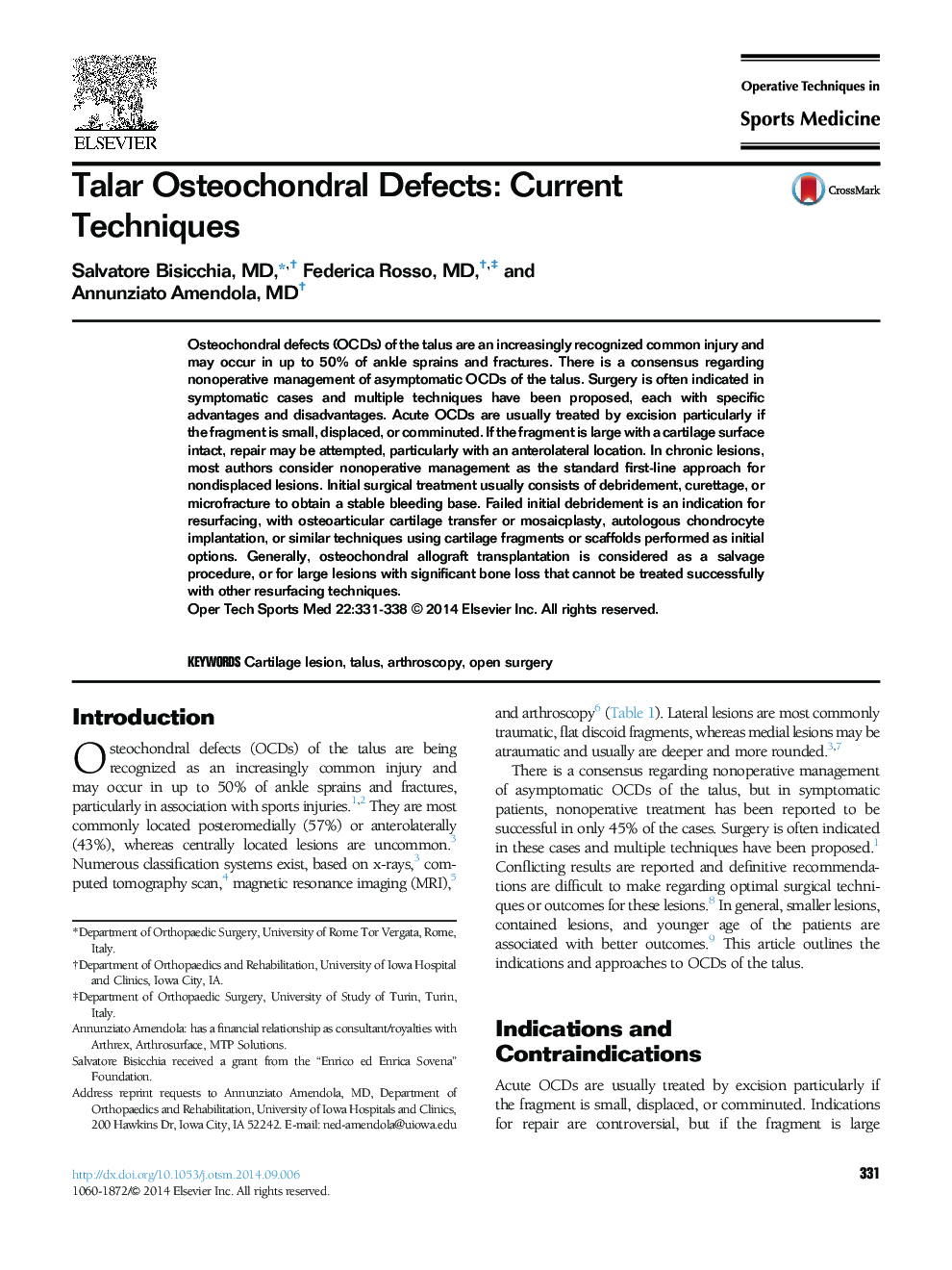| Article ID | Journal | Published Year | Pages | File Type |
|---|---|---|---|---|
| 4079574 | Operative Techniques in Sports Medicine | 2014 | 8 Pages |
Osteochondral defects (OCDs) of the talus are an increasingly recognized common injury and may occur in up to 50% of ankle sprains and fractures. There is a consensus regarding nonoperative management of asymptomatic OCDs of the talus. Surgery is often indicated in symptomatic cases and multiple techniques have been proposed, each with specific advantages and disadvantages. Acute OCDs are usually treated by excision particularly if the fragment is small, displaced, or comminuted. If the fragment is large with a cartilage surface intact, repair may be attempted, particularly with an anterolateral location. In chronic lesions, most authors consider nonoperative management as the standard first-line approach for nondisplaced lesions. Initial surgical treatment usually consists of debridement, curettage, or microfracture to obtain a stable bleeding base. Failed initial debridement is an indication for resurfacing, with osteoarticular cartilage transfer or mosaicplasty, autologous chondrocyte implantation, or similar techniques using cartilage fragments or scaffolds performed as initial options. Generally, osteochondral allograft transplantation is considered as a salvage procedure, or for large lesions with significant bone loss that cannot be treated successfully with other resurfacing techniques.
